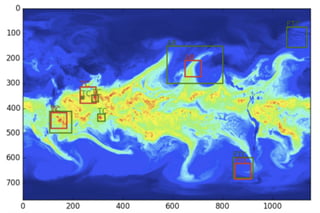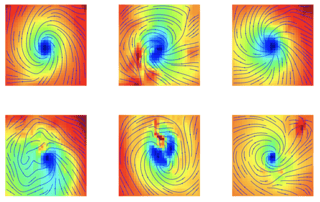Since circa 1887, our friend Punxsutawney Phil has been gracing us with his presence on February 2. Luckily for us, the Washington Post already a cool analysis in 2015 and Jeremy Neiman did another one last year that proves — spoiler alert — groundhogs cannot predict the weather. But you know who can?! Real meteorologists, who are increasingly using data science, machine learning (ML), and artificial intelligence (AI) for more nuanced prediction.

If you didn’t grow up in North America and have no idea why I’m talking about a goofy rodent in the context of data science, you may have already stopped reading. But if not, here’s the Wikipedia so you can brush up and read on. You’re welcome.
The Age of Deep Learning
The weather is interesting when it comes to applying advanced data science techniques because the study is traditionally largely based on physics, with typical weather forecasting — which has been in place since the 1950s — relying on physical simulations that use simple algorithms. And for the most part, this works alright. After all, how specific does one really need to get with the weather at a local level?
However, the mindset and attitude toward advanced machine learning is beginning to change as satellite imagery improves, meaning the amount of data available (as in other industries) is exploding. Meteorologists are discovering the world of deep learning, for which the discipline is particularly well-suited given the amount of unstructured data and need to detect ever more subtle environmental changes in the face of climate change.

Sample results (deep learning predictions in red) for weather patterns and their location (source).
In fact, there are already several examples of deep learning techniques detecting subtle climate patterns unseen by other methods or even by humans. This article talks about several examples, including systems that can detect the formation of tropical storms and El Niño-like patterns. Here’s another one with some cool visualizations of tropical storms detected using machine learning.

Images of tropical storms correctly identified by ML (source).
If you’re interested, Mark Holmstrom, Dylan Liu, and Christopher Vo at Stanford University also wrote an interesting paper on machine learning applied to weather forecasting that showed how traditional, physical models caused errors to accumulate quickly for longer time periods, though the professional weather forecasting service did outperform machine learning models over short periods.
So it isn’t really a question of one science against another — deep learning (and AI) can really augment traditional techniques to provide better insight and predictions on large, dangerous weather events that have the ability to cause massive destruction and damage. In the future, the hope is that they can also help us better understand and track long, slow changes in climate to prevent future (perhaps yet unknown) weather events.
A Small Case for Replacing Groundhog Day
OK, so in conclusion, back to the rodent. Don’t get me wrong, I am exceedingly thankful that this silly tradition produced arguably one of the greatest movies of the 90s (yeah, I said it).
Yet year after year, school teachers around the country create curriculum around it that doesn’t capitalize on the opportunity to teach kids about real predictive analytics. For example, data visualization is fun and a great way to get kids (or really anyone) excited about data science. If there are any teachers reading this — how about a data viz activity for next Groundhog Day?!

Reluctantly on board with Groundhog Day since 1887.
And frankly, with all the media attention that Groundhog Day receives, wouldn’t that time be better spent talking to and educating the public about all the great things ML, deep learning, and AI do in our everyday lives? Here’s to hoping for an early spring. Happy Groundhog Day!




